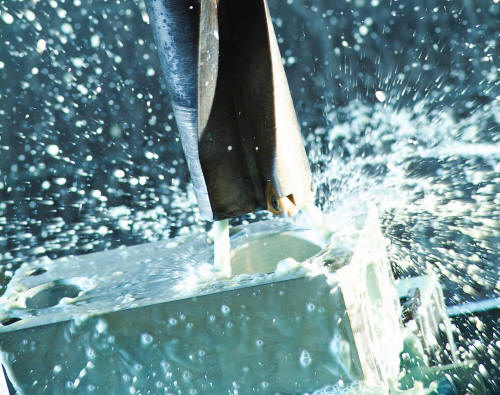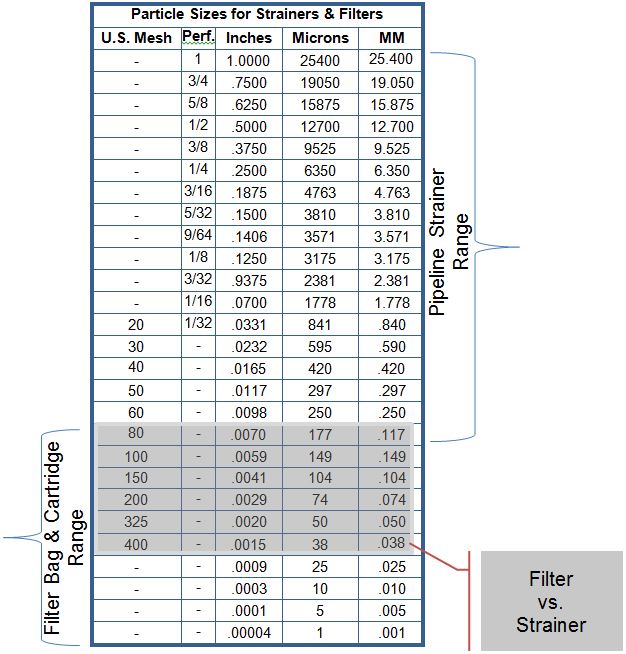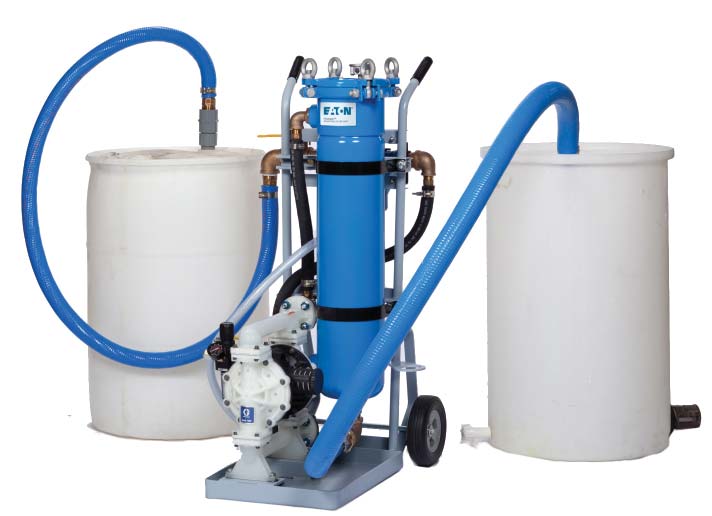Industrial Duty Bag Filter Housings for Coolant Filtration
Enhancing Tool Performance and Prolonging Coolant Life

This article makes a case for using industrial duty bag filter housings for coolant filtration applications and mentions ways they are incorporated into low- and high-pressure coolant systems.
Filtration of machine tool coolant significantly enhances the performance of cutting tools and prolongs the useful life of the coolant itself.
What is machine tool coolant?
Cutting, grinding,
drilling and milling of plastics and metals generates particles and
heat. Coolant is a liquid used to:
-
Dissipate heat by cooling down the tool and workpiece. Excessive heat accelerates tool wear and can damage the item being machined.
-
Lubricate the interface of the tool and workpiece, reducing the friction and thus prolonging the lifespan of the tool within its optimal performance range.
-
Eject and break “chips”, the pieces of metal and plastic removed from the workpiece. Without such ejection and breakage these are repeatedly cut by the tool, which accelerates tool wear and also contributes to increased heat and damage to the surface of the workpiece.
-
Prevent corrosion of the tool and workpiece, which might be particularly important for ferrous materials.
Coolants are available in water based, oil based and other synthetic varieties but one thing they all have in common is that they will work better and last longer when properly filtered!
Benefits of coolant filtration
-
Reduction of abrasive wear of system components such as coolant pumps, rotary unions and tooling.
-
Improved surface finish due to reduced heat and optimal lubrication contributes to overall quality and less rejects.
-
Extended coolant life equates to less coolant purchased and disposed of annually.
Filtration for machine tool coolant applications is not much different from other industrial applications. An assumption we will make is the the flow rate does not exceed 180 GPM. In our experience most individual CNC machining applications use anywhere from 3 to 20 GPM of coolant; high pressure systems requiring lower flow rates than low-pressure systems.
The next step is to determine how fine you want to filter the coolant. There are additives in some coolants that are >20 microns and you want to be careful not to undermine the performance of the coolant by over-filtering (essentially stripping the coolant of those additives). Some pump systems and system components have specific filtration requirements which will define the level of filtration required.
A nominally rated 50-micron filter bag is probably a reasonable starting point as it shouldn’t damage the coolant and particles finer than 50 microns are not visible to the naked eye. The cost for nominally rated 10-, 25-, 50- and 100-micron filter bags are the same, the trick is to filter as little as necessary and thus reduce the number of filter bags used annually.
Filter Bags vs Filter Cartridges
Refer to our article comparing the two types of elements Filter Cartridges or Filter Bags? for a detailed comparison, however for machine tool coolant applications it amounts to the total surface area available and the ability to enhance filtration with specialized accessories which optimize efficiency and contributes to easier media replacement. Examples of filter bag accessories include:
-
Powerful 9300 gauss magnetic assemblies, as described in detail in our article Augmenting filtration with magnetism, will significantly increase the volume of ferrous fines retained and enable retention of much finer particles than you could separate with any physical media – and it won’t damage the coolant!
-
Materials and inserts which provide oil absorbency in addition to physical filtration, reducing tramp oil which contributes to reduced coolant performance, foaming and bacterial growth.
-
Displacement balloons inserted into the filter bag chamber to minimize the coolant retained in a dirty filter bag; these reduce coolant loss and improves the ergonomics of lifting the filter bag from the vessel.
Filter bags have a larger surface area and holding volume than filter cartridges; they are also much less expensive. Filter cartridges excel at depth filtration, which is typically a much finer level of retention then actually required for machine tool coolant applications. If you have a low flow rate requirement without concern for ferrous particle retention or trap oil contamination, a filter cartridge system can do the job; the DIY’ers using “big box” whole home filter cartridge units save on the initial cost of a filter housing and if they are not doing a lot of machining, they probably have acceptable results. The accounts we focus on are almost continuously manufacturing and the economy of scale for reducing coolant consumption, rejected/reworked components and frequency of filter media changes result in a quick ROI.

Where to place the filter?
If you are adapting to an existing low-pressure system, you can place the filter housing between the discharge of the sump pump and spindle/tool. You should use a differential pressure gauge to easily determine when the differential pressure reaches 5-7 PSI; this is when the filter media needs to be replaced. You could use a pair of less expensive standard pressure gauges, one at the inlet and the other at the outlet and then subtract the difference but that might be harder to determine depending upon the gauge scale and lighting where the filter is installed. Although most filter bags will tolerate differential pressures in excess of 10 PSI, it is important to make sure you have sufficient time to change-out the filter media to minimize risk of damaging the media and contaminating your system.
If you add an additional pump to your system, whether high or low pressure, it is good practice to use an external feed tank for your filtered coolant; it will reduce the chance of inadvertent pump cavitation if the media should become clogged enough to restrict flow to the pump. If the pump you use isn’t a sealless Hydra-Cell, then a low-level switch should be incorporated to indicate the coolant level is dropping faster than it can be replenished. With that said, some manufacturers of add-on pump systems forgo the reservoir tank to minimize the overall footprint of their systems.
With a dual pump system the sump pump transfers coolant through the filter and into a reservoir or the inlet side of the coolant delivery pump.
It is not advisable to install filtration between high pressure pumps and the CNC machine because bag filter housings are only rated for ≤ 285 PSIG and the filter bags themselves are only rated for differential pressures of 10-20 PSI; positive displacement pumps have a pulsating pressure characteristic of 10-15%, making them generally incompatible with bag filter housings.

There are special high pressure simplex and duplex filter cartridges specifically designed for hydraulic applications which could be used on the discharge side of high pressure coolant pump systems. The downside to using those is that they have an expensive initial cost and use filter cartridges that typically >5x the cost of a comparable filter bag. Furthermore, with less surface area for filtration, those expensive cartridges will not last as long as the filter bags.

We suggest using a #2
size bag filter housing because their cost is similar to the #1 size
yet they provide double the volume and surface area of the #1 size
($1400 vs $1300). The other industry standard sizes are #3 and #4.
Avoid proprietary filter bag sizes as they are typically more
expensive and you have less options if there is a supply chain
issue.
Other design characteristics include location of the inlet and outlet, the type of chamber closure, and desired material of construction inclusive of alloy and non-alloy materials.
You do not necessarily need a filter bag in your housing!
If your filtration requirements are ≥50 microns, the internal filter bag support basket can be modified into a 325-mesh lined basket, thus eliminating a requirement for disposable filter media altogether! The bag filter housing essentially becomes a pipeline strainer with oversized basket to minimize cleaning frequency.
Coolant Sump Cleaning
Another area in which bag filter housings are used at CNC machining centers is filtering the used coolant prior to disposal. When combined with an air operated diaphragm pump, spent coolant can be sucked-up, filtered and transferred to a disposal tank.
Our website provides significant information regarding bag and cartridge filtration. Personal support is only a phone call or “Chat” click away! please call us at 908.362.9981 for immediate assistance!





